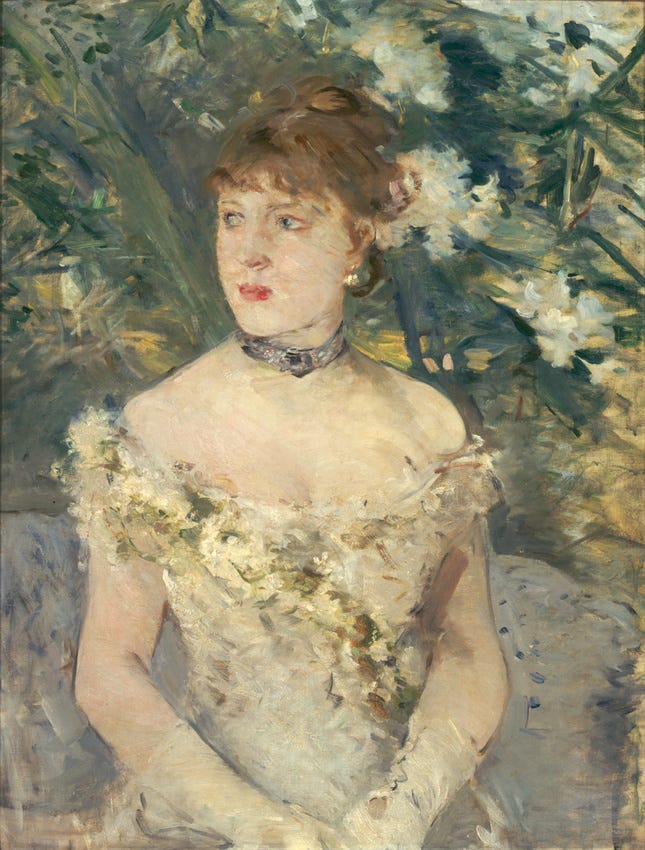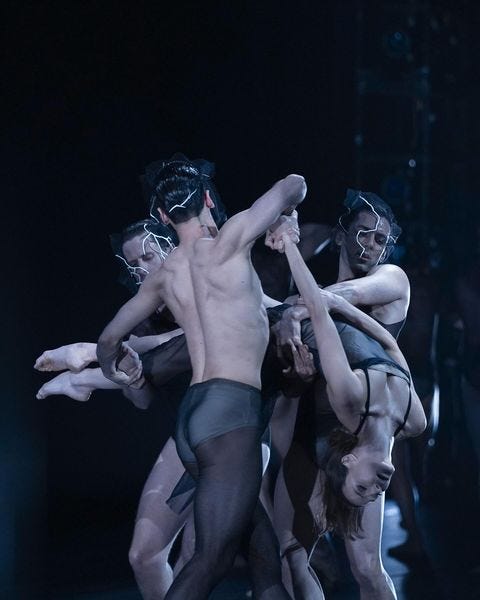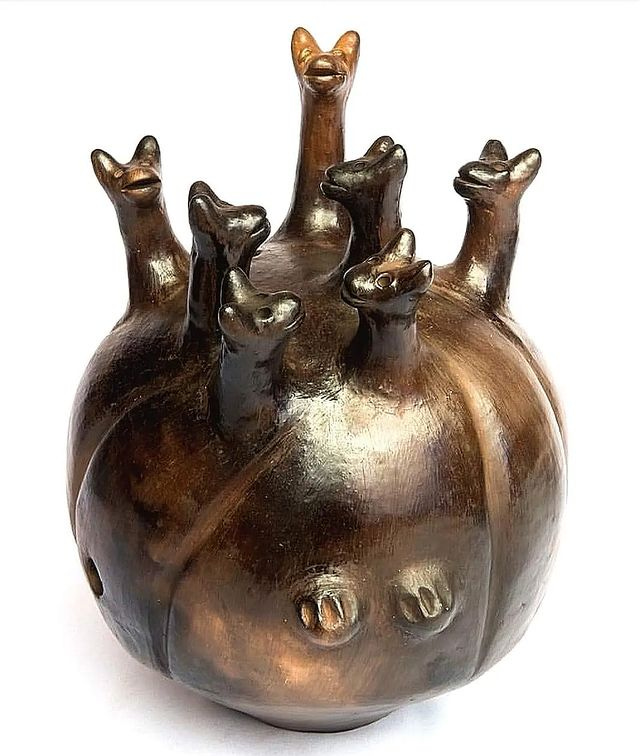Did somebody say Crime and Punishment ballet?
Plus, more Elgin Marbles drama and the multi-hyphenate artist you need to know about.
Hello! It has been a busy…month and a half? But I am back, and you can expect to see more arts and cultural news roundups and breakdowns going forward. Let’s say at least once a week. For now. In May, I had a milestone birthday and went on a solo trip to Vienna, where I mostly went to museums and live performances and developed a burgeoning fascination with the Austro-Hungarian empire. All the typical things one does on vacation.
But there is a lot I have missed. So let’s get into the news.
Change is afoot at American Ballet Theater. The Times just profiled Susan Jaffe, the former principal dancer who calls Baryshnikov her mentor and who stepped into the role of artistic director at the national ballet company in 2022. Basically, ABT is in a moment of change and—like many arts organizations—struggling to reach its pre-pandemic levels of engagement. Donations and subscriptions are down, which means fewer performances, which means less money for dancers to live on their art, and less money to invest in the future of this art form. This season, there are 31 fewer performances than there were in the 2018-2019 season. That’s not the only stress the company has faced: earlier this year, dancers went on strike—a moment of collective action that resulted in an agreement that included better benefits and higher wages.
Jaffe—whose 22-year dance career in ABT was both storied and precocious (famously, Baryshnikov pulled her from the corps de ballet, a ballet company’s lowest rank, to replace star ballerina Gelsey Kirkland in a Kennedy Center performance, when she was just 18)—is on her feet, weatherproofing the ship through the ongoing storm. This year, the company held its spring gala in May, in order to attract wealthy donors before they head off to “the Hamptons or Italy” during ABT’s summer season at the Metropolitan Opera House in late June and July; it brought in $1.4 million. For context, a donation of $250 purportedly covered two pairs of custom pointe shoes for a dancer, which may last no longer than two days, if that.
Jaffe is also intent on commissioning new works—a strategy that the Metropolitan Opera has engaged in since 2022. Last year, the company staged Like Water for Chocolate, a ballet by choreographer Christopher Wheeldon inspired by Mexican author Laura Esquivel’s 1989 novel by the same name. It received lukewarm reviews, most notably for the density of its plot, which at times mired its sense of movement. While I appreciated the company’s earnest efforts to engage with Mexican creatives through the development of the ballet—notable, especially because of the predominantly white Eurocentric history of classical ballet—and I liked certain visual spectacles of the ballet, I ultimately agreed with that assessment. I will probably still see it this summer again.
Anyway, the nugget in this story that really stopped me in my tracks was the news—which I must have missed earlier—that the company has commissioned its first full-length ballet by a woman, and it is Helen Pickett’s take on Dostoevsky’s Crime and Punishment. It will premiere during the company’s February 2025 season at the Kennedy Center. Pickett has also developed ballets based on The Crucible and Madame Bovary (among others). Okay…love it.
Like Water isn’t the only literary ballet ABT will be bringing to the stage. It will also have its New York premiere of Woolf Works, Wayne McGregor’s ballet inspired by three different Virginia Woolf novels. ABT’s summer season starts next Tuesday at the Metropolitan Opera House at Lincoln Center and includes story ballets like Swan Lake and Romeo and Juliet. Tickets can start as low as $35 (honestly, the family circle seats aren’t bad). I have reached out to the Met to find out if the company is offering $30 under 30 seats this season, which runs through July 20.
I think ABT has done a really great job modernizing its advertising efforts with its high-production-performance “trailers,” which I first noticed last year. The company also does a fairly good job promoting is $30 under 30 tickets (which, again, we will see if they are still available this season), but I do think it could learn from the Met Opera, which hosts “Fridays Under 40” nights that, for about $60, get patrons discounted tickets to the opera, pre-show drinks, and the chance to dress up and take photos in front of a step-and-repeat. These tickets seemingly sell out rapidly—I was unable to secure any this season. So, ABT (and New York City Ballet, while we are at it): Why not offer a premium tier of discounted tickets to draw in a new generation of patrons and appeal to those of us who don’t quite have the income to splash out for young patron galas? Seems like there is an opportunity to meet more people in the middle.
If you can believe it, there is more Elgin Marbles news. In a historic surprise—given its 400 years of Ottoman rule in the now independent nation—Turkey is on Greece’s side. The British Museum maintains that it has a right to the marbles, which once stood on the Acropolis in Athens, saying that in the early 19th century, the Ottoman Empire gave British ambassador Lord Elgin, a firman, or permit, to take the marbles to Britain. These actions were determined to be legal in 1816 by a Parliamentary Select Committee, the Museum says.
Of course, Greece has repeatedly rejected the legality of the move in recent years, and now, Turkey has come out, saying that it doesn’t have the receipts. Zeynep Boz, the head of the Turkish Culture Ministry’s anti-smuggling committee, just said in a UNESCO meeting that the country has not been able to find any record of such a permit being given. It doesn’t seem that Turkey came to the meeting with this aim, but rather had a mic drop moment when a British official brought up the marbles. “To have remained silent would have amounted to acknowledging the British claim,” she told the Associated Press. “I had to say: ‘We are not aware of such a document’.” [air horn]
Greek Culture Minister Lina Mendoni, of course, agreed. The Museum reiterated its desire to figure out a “partnership” that would serve as a compromise. We will keep watching this space.
Make the arts more accessible! Some good news: New Zealand Opera has developed the first technology in the world to give blind and low-vision operagoers access to subtitles in braille. You can expect subtitles at many opera houses worldwide, which help attendees understand what’s happening in Carmen if you don’t speak French and what’s happening in The Marriage of Figaro if you don’t speak Italian. Etc. Sure, you can enjoy opera without understanding exactly what is happening, but text assistance can make a big difference.
“I know the audience was laughing at the [subtitles] because they were so idiosyncratic—to know what they were laughing at, you had to have access to the [subtitles],” Paul Brown, a blind opera fan and co-director of the company Audio Described Aotearoa—who helped develop the tech—told The Guardian of a performance of the opera Le Comte Ory, which had been translated into New Zealand slang. For him, and opera fans around the world, this development is nothing short of “life-changing.”
The coolest living artist I didn’t know about is Nona Hendryx. The 80-year-old performing artist and technologist—who wrote the 1974 hit “Lady Marmalade” as a part of the funk band Labelle (fronted by Patti LaBelle)—is the mastermind behind Dream Machine, an AI/AR/VR experience that opens at Lincoln Center today and runs through June 30; collaborators for the project include artist Mickalene Thomas and musicians George Clinton and Laurie Anderson. Just do yourself a favor and read the NYT’s profile of Hendryx (who, yes, is distantly related to Jimi), and prepare to be inspired by her formidable career.
What will people buy at Art Basel? If trends hold, indigenous artists, particularly those from the Global South, may see a boost. As The Art Newspaper reports, collectors often frequent the Venice Biennale—which opened in April—to scout for new artists, whose work they later acquire at Art Basel. This year, Biennale curator Adriano Pedrosa emphasized “queer, Indigenous, and self-taught artists, particularly those from the Global South.” As Art Basel opens in Switzerland on Thursday, the indigenous artists showing at the art fair may see a Venice boost thanks to their elevated global profiles.
One Paraguayan Guaraní artist, Julia Isídrez, for instance, was unrepresented last year. Now, her ceramic, animal-inspired artwork—with prices between $15,000 to $20,000—has a waiting list. Once again, proof that curatorial representation makes a discernable difference in the lives of artists.
More museum employees are unionizing. Solidarity to the staff at New York City’s American Folk Art Museum and Maryland’s Glenstone Museum, who voted unanimously in favor of unionization last week with UAW Local 2110, following in the footsteps of other arts organizations like Dia Art Foundation and the Massachusetts Museum of Contemporary Art.
How do we feel about the Rachel Cusk font? Per people on the site formerly known as Twitter, it is Optima, a typeface designed in 1958. It is inspired by Roman capitals, an ancient Roman form of writing used for architectural inscriptions, and Renaissance tomb inscriptions. Its designer Hermann Zapf said it was his favorite typeface, but also allegedly wrote that “a father should not have a favorite among his daughters.” Very noble, Hermann. ▲










Love these roundups more than you know! 🤍
Hi! I'm going to NYC in the fall and was wondering if you think seeing ABT's Crime and Punishment will be worth it?